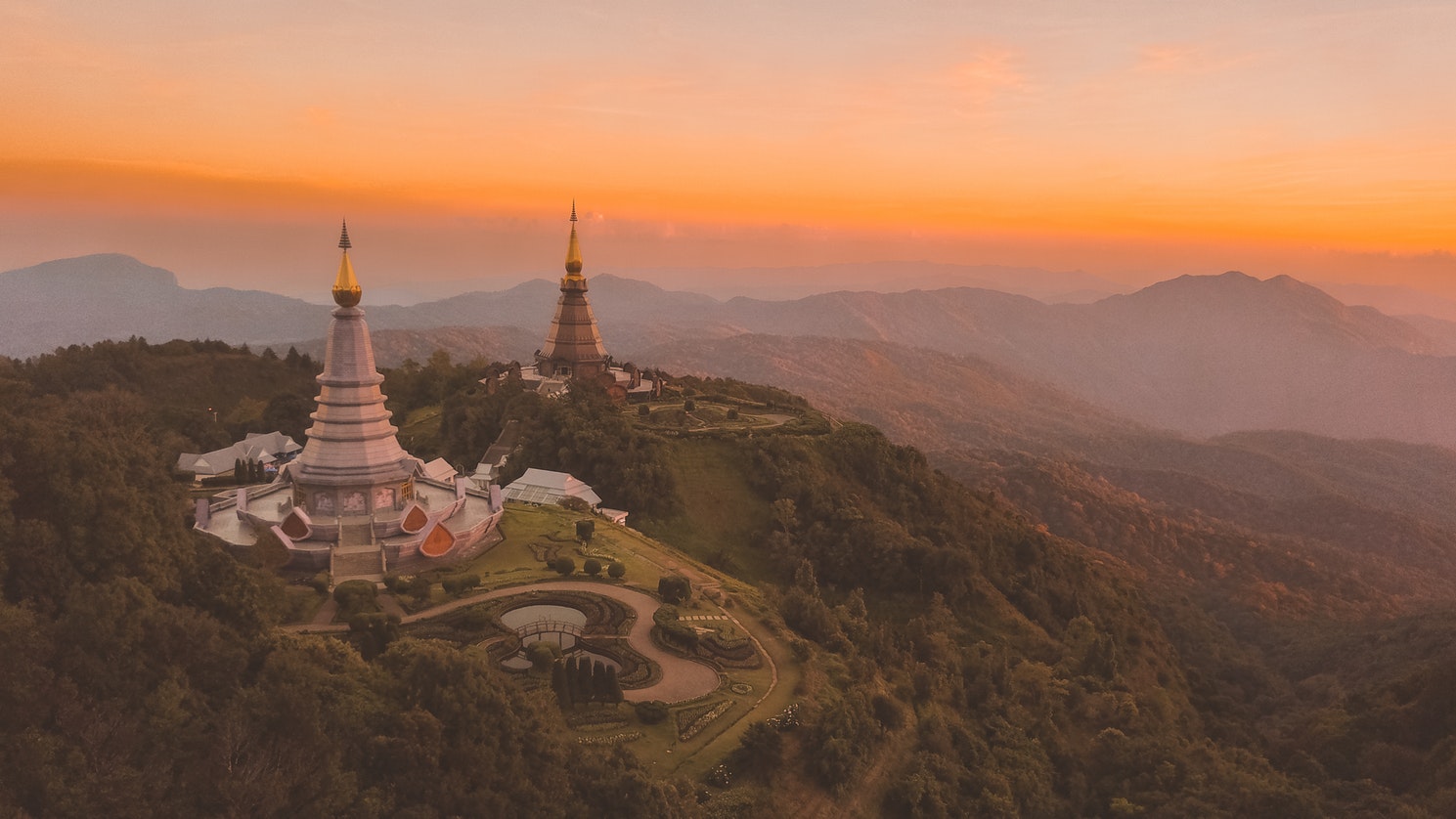
Whether you are a tourist or long-term traveller, whatever you’re looking for in your explorations, you are almost guaranteed to find it in what is now one of the globe’s hot-spot travel destinations… Thailand. With its unique culture, celebrated cuisine, adrenaline-charged nightlife, great beaches, mostly agreeable climate and largely friendly natives, what’s not to like? True, it’s probably not the ‘edgy’ destination it was twenty years ago, but the great attraction of Thailand to the masses is that it is a country of such great diversity. From the mega metropolis that is Bangkok, the country’s 127 National Parks, its numerous white sandy beaches, notorious party destinations, ancient temples, to the mountainous north, it literally has something for everybody. And while the Thailand of today is perhaps a little more expensive than in the past, it still offers great value for money, especially in terms of travel and accommodation. Over the past 20 years, successive Thai governments have particularly concentrated on the developed of its transport infrastructure, to a point where today, it is superior to that of many developed countries. With its numerous budget airlines, well-developed road network, extensive bus/mini-bus services and cheap taxis, there are few countries where it is easier or cheaper to get around.
Getting around – planes, trains and automobiles
 Thailand has seven international ports, Suvarnabhumi (Bangkok), Don Mueang (Bangkok), Chiang Mai, Phuket, Pattaya (aka U-Tapao), Hat Yai, and Chiang Rai. Major airlines tend only to operate out of Bangkok’s main airport, Suvarnabhumi, while the other six almost exclusively service destinations throughout Asia, as well as domestic routes. There are also 27 domestic airports spread throughout the length and breadth of the country.
Thailand has seven international ports, Suvarnabhumi (Bangkok), Don Mueang (Bangkok), Chiang Mai, Phuket, Pattaya (aka U-Tapao), Hat Yai, and Chiang Rai. Major airlines tend only to operate out of Bangkok’s main airport, Suvarnabhumi, while the other six almost exclusively service destinations throughout Asia, as well as domestic routes. There are also 27 domestic airports spread throughout the length and breadth of the country.
Domestic air ticket prices are generally very affordable, although flights to the islands can be a bit pricey. There are 9 or 10 budget carriers, but like everywhere else, it’s best if you plan your journey ahead to get the best ticket price. I would say booking a week or so in advance of flying is the optimal. However, I did manage to get a flight, booking only a couple of days beforehand, between Bangkok and Khon Kaen in June (2018) for the princely sum of 500 THB ($15). However, to get that kind of price you will have to book the flight yourself through the internet. I’ve found it’s generally best to go direct to the company website rather than a third party site. And it should be noted that usually only a credit card, rather than debit card, will be accepted for payment. It is possible to book flights at any travel agent but you have to shop about for the best price, since none of them use the full spectrum of operators, and they also have varying rates of commission. The budget carriers I have used in the past are Bangkok Airways, Air Asia, Nok Air, Thai Smile and Lion Air. I have found them all to be absolutely fine. I particularly like Bangkok Airways, who can be a little more expensive than some of the others, but they operate out of Suvarnabhumi, which is easier to get to than Don Mueang if you are staying in downtown Bangkok. Additionally, a nice little perk with Bangkok Airways is that have a lounge for economy passengers.
The lounge in Suvarnabhumi is situated on Concourse A, Level 2 (Opposite Gate A3). One other thing perhaps worth mentioning is that almost all domestic flights transit through Bangkok. Thus, if you wanted to fly from say Chiang Mai to Phrae, both being in the bona-fide north, you would have to take two flights i.e. Chiang Mai to Bangkok and then Bangkok to Phrae. Typically, that would mean a total transit time of 4 – 4.5 hours, but that would still comfortably beat the 10 to 12 hours road trip. 
Trains
All trains in the country are operated by the State Railways of Thailand (SRT). The train can be the cheapest way to travel within the country, especially if you are prepared to travel third class. Some standard trains can have average speeds as low as 40 km/h and they rarely run on time. However, it’s a pleasant way to travel, and probably the best way to see the country, if you have the luxury of time. There are four categories of train i.e. standard, rapid, express and super express. Ticket prices are dependent on the train category and the passenger travel class (1st, 2nd or 3rd). Obviously, the higher the train category and passenger class, the more expensive the ticket. The 4500 km railway network in Thailand, links the four corners of the kingdom, consisting of the Northern, Southern, Eastern and North-Eastern lines. Currently, all long-distance train journeys originate from Bangkok’s main train station, Hua Lamphong, although this is due to change in 2020.
Rapid and express trains on the northern and north-east line tend to be more modern than others. First class carriages on overnight journeys are all air conditioned sleeper cars and are usually available on rapid and express trains. Second class carriages are available in both sleeper and seated forms and may or may not be air conditioned. Third class carriages are fairly basic and do not have air conditioning, but are always clean and comfortable. Third class travel is not available on express trains. All train carriages are non-smoking. Advance bookings can be made from 60 days up to the day before your intended to travel. You can make bookings in person at any train station. Train tickets can also be purchased at travel agents but they will add a booking fee to the ticket price. If you wish to make an advance reservation before you arrive in the country this can only be done through a travel agent, since the SRT’s own online ticket service has for now been discontinued. Long-distance sleeper trains, especially those running from Bangkok to Chiang Mai / Bangkok to Surat Thani, should be reserved well in advance. Both journeys take around 12 hours. These routes tend to sell out quickly as they are favoured by both locals and tourists. This is particularly true during the major Thai holidays. For shorter trips you should consider purchasing your ticket at least a day in advance for any seats other than 3rd Class. If you intend to travel 3rd Class you can just roll up on the day and purchase a ticket at the station. One advantage of travelling 3rd class is that you get more of a feel of authentic Thailand since you will probably find that almost all the passengers are working class Thais. Particular to 3rd Class you will find hawkers boarding the train at almost every stop along the way – they are not allowed in the rest of the train. They sell a whole array of street food and drinks at rock bottom prices. You can also take the train between Bangkok and Penang, Kuala Lumpur or Singapore. The near 2000 km journey to Singapore takes around 48 hours, costing 40 – 60 USD one-way. There is also a Bangkok to Vientiane train service.
Buses and Mini-buses
Morchit Bus Terminal
Mo Chit Bus Terminal is by far the biggest bus station in Bangkok and provides links to the Northern, Central, Eastern and North-Eastern (Issan) provinces of the country. The station is jointly operated by the government and a host of private bus companies. You can easily reach Morchit from any part of Bangkok as there is both a BTS sky train station (Morchit) and MRT underground station (Chatuchak) close to the terminal. You can take a motorbike taxi for 40 THB to Morchit bus terminal from either of the stations. Morchit bus terminal is always pretty chaotic and it’s quite easy to feel a little overwhelmed when you arrive. However, if you head to the main entrance you will find an information desk, where the staff speak reasonably good English, so you will be pointed in the right direction. 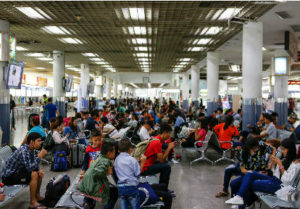
Other Bus Terminals
The Eastern Bus Terminal is located at Ekkami on Sukhumvit Road, where there is also a station on the Sukhumvit Line of the MRT. This bus terminal provides travel links to the whole of the Eastern seaboard, including Pattaya, and some cities in the North East. The Southern Bus Station is a fair way out of downtown Bangkok. However, if you want to take a bus from there, you can take the sky train to the last MRT station on the Silom Line, Bang Wa. From there, you will need to take a regular taxi. There is a taxi rank at the entrance to Bang Wa. The fare to the southern bus station should be around 150 THB. At journey’s end you will find that most bus stations are situated within or close to the town centre. There are always plenty motorcycle taxi drivers hanging around almost all bus stations, if you do need transport to your accommodation. I’ve always found that you can negotiated a fair price for the ride without much difficulty. Be aware that around Thai public holidays, and especially the Thai New Year in mid-April (Songkran), you will need to make a bus reservation well ahead of your planned journey. Seats sell out fast, since a large number of the migratory rural Thais who live and work in the capital, will head back to their village for the holidays. And, if you want to guarantee a seat on a VIP bus, which offer more leg room and better air conditioning than a standard bus, it’s also probably a good idea to book a couple of days ahead.
Mini-buses
It should be mentioned that many bus services in Thailand are replicated by mini bus services. In Bangkok, the main providers either operate out of Morchit Bus Terminal or from Victory Monument (close to the BTS station). Typically, a journey by mini-bus will be 50 – 100% more expensive than the bus, but it will complete the trip in significantly less time. However, the safety records of some of these mini-bus operators is at best…….questionable!
Money, money, money
Thai Baht (THB or ฿)
The official currency of Thailand is the Thai Baht. Apart from international airports, it is not usually possible to purchase anything in any other currency than the Baht throughout Thailand. Coins are issued 1, 2, 5 and 10 Baht denominations. A Satang is 100th of a Baht, and there are also 25 and 50 Satang coins. However, the only places that seem to price in these coins are the Family Mart and Seven Eleven convenience stores. THB banknotes are issued in denominations of 20, 50, 100, 500 and 1000.
Currency Exchange
In general, you will get the best currency exchange rate in Thailand for cash. It’s possible to exchange money in those currencies that are considered stable by Thailand at the market rate. However currencies considered unstable will attract a very poor rate or it might not be possible to exchange these monies at all. If you need to change money at the airport on arrival, you will receive around 10% less than the downtown rate.  You will get the best rate for your buck at the currency exchange kiosks that are prolific at all major tourist destinations. The banks generally offer a slightly less favourable rate than the kiosks, and the process is more formal so takes quite a bit longer to complete. If you exchange money at a kiosk you can generally use your passport, ID card or driving license (if it has a photo) for identification purposes, while banks only accept passports. Kiosks generally won’t accept damaged or defaced banknotes but you might be able to exchange them at the bank
You will get the best rate for your buck at the currency exchange kiosks that are prolific at all major tourist destinations. The banks generally offer a slightly less favourable rate than the kiosks, and the process is more formal so takes quite a bit longer to complete. If you exchange money at a kiosk you can generally use your passport, ID card or driving license (if it has a photo) for identification purposes, while banks only accept passports. Kiosks generally won’t accept damaged or defaced banknotes but you might be able to exchange them at the bank
Traveller’s Cheques
Most currency exchange kiosks and banks will accept traveller’s cheques, however you can only really rely on American Express T.C.’s as other brands may be rejected. There seems to be a universal fee of 150 THB per cheque for exchange. You will also get a slightly less exchange rate for a cheque than cash.
ATM’s and Bank Cards
ATMs are just about everywhere in Thailand, including at almost all sites of the two major national chain convenience stores i.e. Seven Eleven and Family Mart. The ATM provider will charge you a fee of 150 THB per currency transaction. Your own bank’s fees will obviously be on top of that charge and the applied exchange rate will usually be lower than that available in Thailand. Credit Cards and Debit Cards are now becoming more widely accepted throughout Thailand. You should have no problem using them at all major department stores, many hotels or restaurant chains. 
Climate – when to go?
Thailand has a tropical climate which has three distinct seasons – the hot season from March to May, the rainy season from June to October and the cool season from November to February. The mean temperature throughout the year is around 30 degrees Celsius (86°F). Maximum daily temperatures often reach 38 degrees Celsius during the hot season. High levels of humidity are usually prevalent for the duration of the hot and rainy seasons. June is the start of the monsoon (rainy season) which lasts until the end of October. The rains are usually short in duration but high in intensity. September and October are the wettest months throughout the whole of Thailand. The rain doesn’t usually represent any problems for the traveller, since the remainder day after any storm often remains relatively pleasant. However, parts of the north and north-east can be prone to heavy flooding during this period. During the cool season in the north temperatures can fall to under 10 degrees Celsius (50° Fahrenheit) during the night. However, during the day the temperature will usually rise to almost 30 degrees Celsius (86° Fahrenheit) again. It is also usually very pleasant throughout the rest of the country as humidity fall significantly during this period. However, not unexpectedly, this period also coincides with the peak tourist season where prices for accommodation are pushed higher. 
Accommodation – where to stay?
In general, Thailand offers great value for money across the full spectrum of tourist accommodation. There is a general abundance of hotels, guesthouses and hostels in the main tourist areas. The subsequent competition within the industry has helped to keep prices relatively low throughout the country. Additionally, great discounts can be obtained at many hotels during the rainy season (low tourist season), if you want to stay a week or more. That said, just like every other tourist destination, the accommodation you book in Thailand can also disappoint. We all know that the age of the internet has spawned a whole host of websites that advertise accommodation for just about every possible tourist destination in the world. And we are all familiar with the leading players, i.e. Adoga, Expedia, Trivargo, Booking.com, Trip Advisor, etc. It goes without saying that these websites are now always going to be the first place you look for a good deal on holiday accommodation. However, I’ve found that these hotels own websites sometimes advertise superior deals to those on the big hotel booking sites, albeit the difference usually fairly marginal. Bangkok is generally, not unexpectedly, the most expensive place In Thailand for accommodation, closely followed by Phuket and the islands. However, it’s still very possible to find bargains in some hotel classes, depending on your travel flexibility. Deals in Pattaya and Chiang Mai, as well as the rest of Thailand, can be found at somewhere between 30 – 50% cheaper than for a hotel of similar standard in the capital. 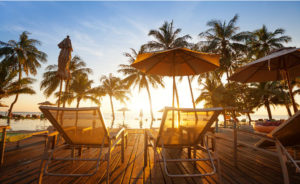 A very rough guide to typical accommodation costs in Bangkok are as follows: Shared room in a hostel dormitory: 300 – 500 THB No frills room in guesthouse/small hotel: 700 – 1000 THB Boutique style hotel: 1300 – 2000 THB Thai/International Chain Hotel: 1500 – 3000 THB Four and five star Hotels: 3000+ THB
A very rough guide to typical accommodation costs in Bangkok are as follows: Shared room in a hostel dormitory: 300 – 500 THB No frills room in guesthouse/small hotel: 700 – 1000 THB Boutique style hotel: 1300 – 2000 THB Thai/International Chain Hotel: 1500 – 3000 THB Four and five star Hotels: 3000+ THB
Visas
The visa rules for entering Thailand are very fluid and this has been particularly true over the last few years. My understanding of the current visa and entry rules to Thailand are as follows: British, American, Canadian, Australian, South African, most EU and a few Asian Country passport holders can enter Thailand by air and stay for 30 days without a visa – this is known as a visa exemption. If you enter over land you will only be permitted a 15 days stay. Certain other nationalities are allowed to get a visa-on-arrival and obtain 15 days entry, while the remainder must apply for a visa before coming to Thailand. Be aware that Thai Immigration officials may ask you for proof of onward travel (i.e. a return or onward air ticket) when arriving on a visa exception. You should make all reservations before leaving for Thailand. Some airlines refuse to board passengers without evidence of onward travel. Immigration officials can also ask for proof of adequate finances equivalent to 10,000 baht per person. However, if you enter Thailand on a tourist visa you exempt from any such scrutiny. You can apply for a tourist visa at any embassy as long as you are outside Thailand. A tourist visa is valid for 60 days and can be extended for a further 30 days at Thai immigration. The fee for extending a tourist visa is 1900 THB. A visa is valid 3 months from the day of purchase. You must have at least 6 months validity on your passport the day you enter Thailand. The price of a single entry tourist visa is around 35 USD. It’s possible to get a number of other visas, including a multiple entry tourist visa, for entering Thailand, all with different rules and conditions. I’ve found it best to look up the information on visas at the official Thai Government website on a regular basis, since it is such a dynamic situation. One other important rule worth noting is that if you’re travelling on a 30 day visa exemption, you can only enter Thailand through a land border, twice per calendar year. If you overstay, you’ll be fined 500 baht per day up to a maximum of 20,000 baht. You also risk being held in detention, fined, deported at your own expense and black-listed from re-entering Thailand. Thai authorities have stated that they will always enforce detention for overstays of more than 42 days. 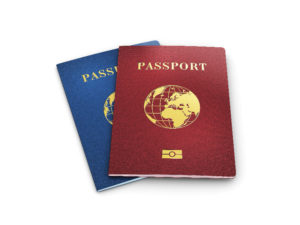
Thailand Where to go/what to do – at a glance
The following are some of the things you could consider doing at Thailand’s mainstay tourist destinations:
Bangkok
- Visit the Grand Palace
- Take a ride in a Tuk Tuk
- Take a ferry on the Chao Praya River
- Go night clubbing
- Take a longboat on the canal network
- Visit one (or all) of the raunchy go-go bar areas – Patpong, Nana and Soi Cowboy
- Visit the floating market
- Watch ‘authentic’ Muay Thai boxing
- Hang out in the renowned backpacker’s hub – Khao San Road
- Visit one of the (many) mega shopping complexes
- Visit (the huge) Chatuchak weekend market

Chiang Mai
- Take a several day trek in the mountains
- Go elephant trekking
- Visit one or more hill tribes
- Go bamboo rafting
- Go white water rafting
- Go fly/game fishing
- Visit the impressive Doi Setup Temple
- Take some Thai cooking lessons
Pattaya
- Visit the tiger zoo
- Have a night out in the notorious Walking Street
- Play golf
- Spend the day at Koh Lanta
- Spend the day at a Water Park
- Take in a ladyboy show
- Visit a crocodile farm
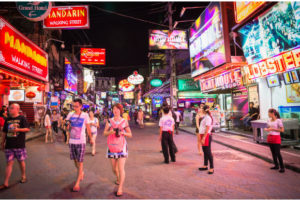
Phuket and other Islands
- Learn to scuba dive
- Chill at one of the numerous white-sand beaches
- Go snorkelling
- Take a boat trip
- Go sea fishing
- Attend a full-moon party
- Go island hopping
Some things to do/not to do
- Forget any preconceptions you may have – most of Thailand is quite conservative
- Respect the monarchy – if you don’t, you might be breaking the law
- Respect the national anthem – if you hear it played, act appropriately
- Dress conservatively when visiting temples i.e. no shorts, short skirts, bare arms etc.
- Respect monks – give them space! It’s taboo for a female to touch a monk
- Don’t go to without adequate travel insurance – hospital treatment is often very expensive
- Don’t get into a tuk tuk (or taxi) without agreeing a fee
- Don’t agree to visit a tailor’s shop, jewellery shop, etc. with a tuk tuk driver
- Don’t go topless – with an exception for men, at or near the beach
- Avoid heated arguments with locals – culturally, loss of face can be a big deal!
- Avoid illicit drugs – if you’re caught by the police, the consequences can be serious




